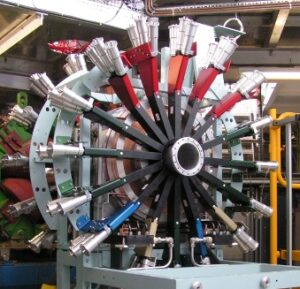
As humans, what we can see with our own eyes is limited to just a very small slice of what it is possible to detect. We are also only able to see objects large enough to register with our eyes. This means we can only see a very small section of our universe, what we call the ‘Macroscopic world’.
On site, we are always working on new ways to see and understand the world around us: whether that is using infra-red light to explore the furthest corners of the Universe, or using X-rays to peer deep into the structure of everything from the structure of viruses and medicines to new and more efficient types of batteries.
Instruments
Some of the instrumentation we have created has changed the way we understand the fundamental elements of our universe. From high resolution microscopes that harness the weird world of quantum mechanics, to extremely sensitive detectors that can measure the energy of particles from a variety of sources. At ISIS, a particle accelerator is used to generate Neutrons and Muons; miniscule particles that when directed at a target, can be used to determine properties of materials on the atomic scale.
Crafts and Activities
Lesson Plans and Fact Sheets
Find out more!
- Find out more about JWSTs Mid-InfraRed Instrument
- Learn about the use of drones for treating plant diseases
- Read about RAL Space’s contributions to the SPEQTRE Instrument

Particles
Our universe is made up of very tiny objects which we typically call particles, some of whom are called ‘fundamental’ and others are made of even smaller particles with different properties. Protons, Neutrons and Electrons are just three examples, but they make up all of the matter we’re used to dealing with; cars, apples, ducks, everything!
Lesson Plans, Activities and Fact Sheets
Particle Accelerators

Particle interactions at very large speeds and energies can tell us a lot about the fundamental rules of our universe. Which particles are governed by which forces? How heavy or light are these particles? What other particles are still to be discovered? Particle accelerators are a critical tool for answering these questions, as they can accelerate particles of matter to velocities as high as you would find in the core of a star or even just after the big bang, which can tell us more about the behaviour of particles in these extreme conditions and how some of the strangest matter in the Universe is produced.
Crafts and Activities
Lesson Plans and Fact Sheets
Find out more!
- Find out about the Lego BeamLine Project from Diamond Light Source
- Read about discoveries with the Martian Cryosphere from X-Ray diffraction at Diamond Light Source
- Resources from Diamond Light Source
- RemoteHandling
